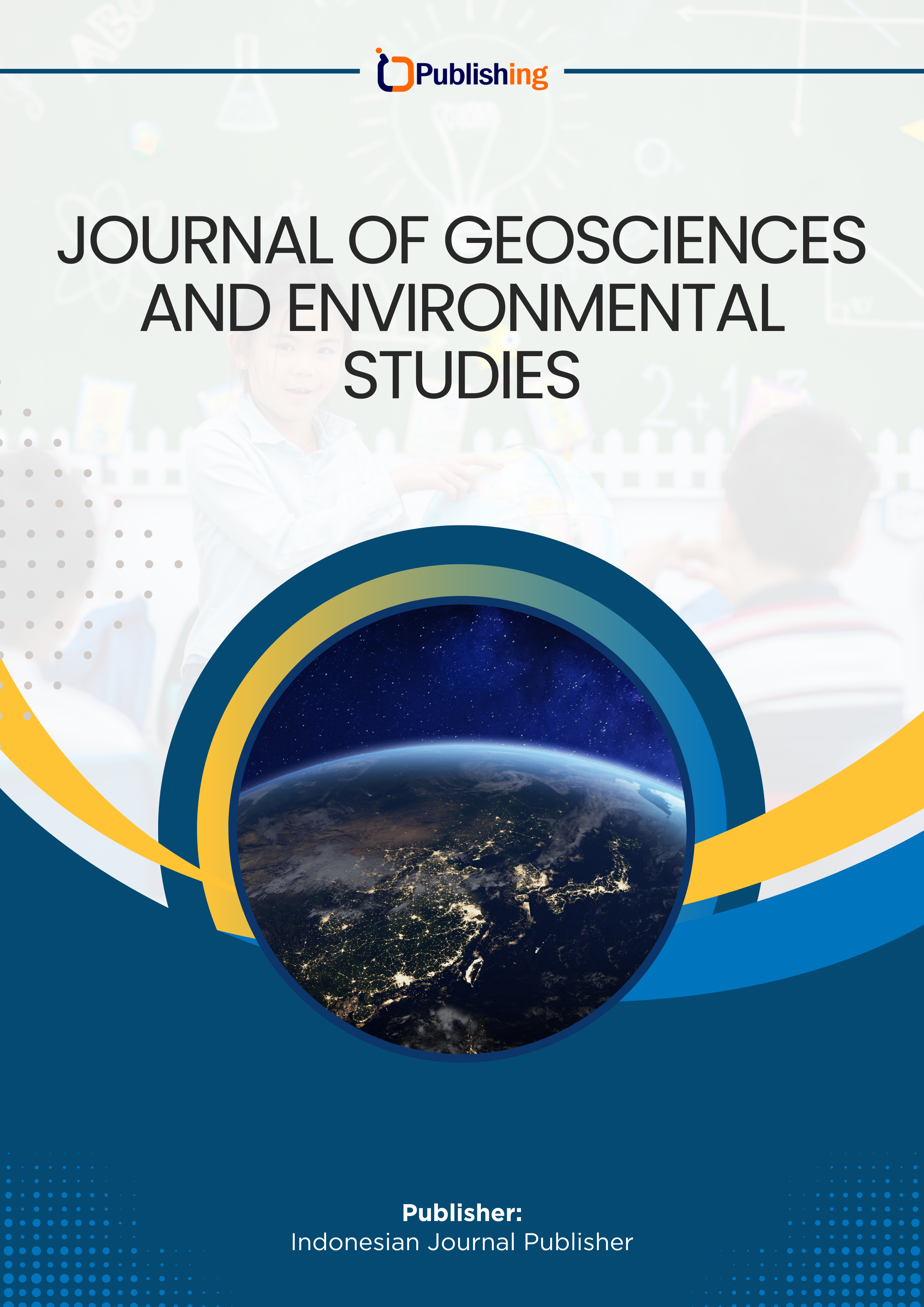Digital Innovation Based on Village Mall Application in the Development of Sidomulyo Tourism Village, Silo District Jember Regency
DOI:
https://doi.org/10.53697/ijgaes.v1i1.3229Keywords:
Digital Innovation, Malldesa, Tourism VillageAbstract
The purpose of this study is to investigate and analyse the influence of digital innovation, specifically the Malldesa application, on tourism village development in Sidomulyo Village, Silo Sub-district, Jember Regency. Malldesa is developing tourism communities in Sidomulyo Village, Silo District, Jember Regency. The research method employed is qualitative, including observation techniques, in-depth interviews, and document analysis as the primary data sources. Malldesa management, community leaders, local officials, and visitors are among those who responded to the research. The findings revealed that the Malldesa application favourably impacted the growth of tourist communities in Sidomulyo Village. This program facilitates transactions, promotes local products, and broadens market reach for village businesses. Malldesa has also helped villages improve their information technology skills and comprehend the value of branding and digital marketing. Furthermore, this digital innovation has increased community participation in tourism village administration. Community participation in decision-making and development planning in tourist villages has expanded, improving collaboration between local governments, business actors, and communities. Thus, this study shows that digital innovation based on the Malldesa application plays a vital role in the development of tourism villages in Sidomulyo Village, Silo District, and Jember Regency. Information technology in the tourist sector can be one of the answers to improving the welfare of rural populations and advancing the area's tourism potential.
References
Aini, S. N., Alfirdaus, L. K., & Marlina, N. (2021). Implementasi E-Government Dalam Tata Kelola Pariwisata Di Kota Surakarta.
Febriandhika, I., & Kurniawan, T. (2021). Pengembangan Pariwisata Melalui Pemberdayaan Masyarakat Dilihat Dari Perspektif Implementasi Kebijakan. https://doi.org/10.26905/jpp.v5i1.2793 DOI: https://doi.org/10.26905/jpp.v5i1.2793
Ferreira, J. J. M. (2019). To be or not to be digital is the question: Firm innovation and performance. Journal of Business Research, 101, 583–590. https://doi.org/10.1016/j.jbusres.2018.11.013 DOI: https://doi.org/10.1016/j.jbusres.2018.11.013
Frank, A. (2019). Servitization and Industry 4.0 convergence in the digital transformation of product firms: A business model innovation perspective. Technological Forecasting and Social Change, 141, 341–351. https://doi.org/10.1016/j.techfore.2019.01.014 DOI: https://doi.org/10.1016/j.techfore.2019.01.014
Ghezzi, A. (2020). Agile Business Model Innovation in Digital Entrepreneurship: Lean Startup Approaches. Journal of Business Research, 110, 519–537. https://doi.org/10.1016/j.jbusres.2018.06.013 DOI: https://doi.org/10.1016/j.jbusres.2018.06.013
Hamidi. (2004). Metode Penelitian Kualitatif-Aplikasi Praktis Pembuatan Proposal & Laporan Penelitian. UMM Press.
Helfat, C. E. (2018). Dynamic and integrative capabilities for profiting from innovation in digital platform-based ecosystems. Research Policy, 47(8), 1391–1399. https://doi.org/10.1016/j.respol.2018.01.019 DOI: https://doi.org/10.1016/j.respol.2018.01.019
Hinings, B. (2018). Digital innovation and transformation: An institutional perspective. Information and Organization, 28(1), 52–61. https://doi.org/10.1016/j.infoandorg.2018.02.004 DOI: https://doi.org/10.1016/j.infoandorg.2018.02.004
Khin, S. (2019). Digital technology, digital capability and organizational performance: A mediating role of digital innovation. International Journal of Innovation Science, 11(2), 177–195. https://doi.org/10.1108/IJIS-08-2018-0083 DOI: https://doi.org/10.1108/IJIS-08-2018-0083
Kohli, R. (2019). Digital innovation: A review and synthesis. Information Systems Journal, 29(1), 200–223. https://doi.org/10.1111/isj.12193 DOI: https://doi.org/10.1111/isj.12193
Lamont, R. J., Burne, R. A., & Lantz, M. S. (2008). Success and failure in e-government projects. http://www.egov4dev.org/success/sfrat
Lestari, P. A., Tasyah, A., Syofira, A., Rahmayani, C. A., Cahyani, R. D., & Tresiana, N. (2021). Inovasi Pelayanan Publik Berbasis Digital (E-Government) Di Era Pandemi Covid-19. https://doi.org/10.31113/jia.v18i2.808 DOI: https://doi.org/10.31113/jia.v18i2.808
Lim, K. Y. H. (2020). A state-of-the-art survey of Digital Twin: techniques, engineering product lifecycle management and business innovation perspectives. Journal of Intelligent Manufacturing, 31(6), 1313–1337. https://doi.org/10.1007/s10845-019-01512-w DOI: https://doi.org/10.1007/s10845-019-01512-w
Mauizatul, H. (2017). Pengelolaan Pariwisata Alam Berbasis Masyarakat (Kasus Objek Wisata Alam Rammang-Rammang Desa Salenrang Kecamatan Bontoa Kabupaten Maros Provinsi Sulawesi.
Mayasari, F. (2018). Digitalisasi Dan Kebudayaan: Studi Pada Pengembangan Kebudayaan Berbasis Kearifan Lokal Melalui Media Baru Oleh Yayasan Sagang.
Miles, B. M., & Huberman, M. (1992). Analisis Data Kualitatif Buku Sumber Tentang Metode- metode Baru. UIP.
Moleong, L. J. (2007). Metodologi Penelitian Kualitatif. Remaja Rosdakarya.
Nambisan, S. (2019). The digital transformation of innovation and entrepreneurship: Progress, challenges and key themes. Research Policy, 48(8). https://doi.org/10.1016/j.respol.2019.03.018 DOI: https://doi.org/10.1016/j.respol.2019.03.018
Nawawi, H., & Hadari, M. (1992). Instrumen Penelitian Bidang Sosial. Gadjah Mada University Press.
Rogers, E. M. (2003). Diffusion of Innovation (5th ed.). Free Press.
Sari, R. A. P., Salim, M., Gessy, N. M. M., & Sulistyaningsih, T. (2021). Inovasi Pemerintah Kota Batu Dalam Pengembangan Sektor Pariwisata Di Masa Pandemi. https://doi.org/10.31113/jia.v18i1.648 DOI: https://doi.org/10.31113/jia.v18i1.648
Sjödin, D. (2020). An agile co-creation process for digital servitization: A micro-service innovation approach. Journal of Business Research, 112, 478–491. https://doi.org/10.1016/j.jbusres.2020.01.009 DOI: https://doi.org/10.1016/j.jbusres.2020.01.009
Sudibya, B. (2018). Wisata Desa dan Desa Wisata. Jurnal Bali Membangun Bali, 1(1), 22-26. https://doi.org/10.51172/jbmb.v1i1.8 DOI: https://doi.org/10.51172/jbmb.v1i1.8
Sugiyono, D. (2013). Metode Penelitian Kuantitatif, Kualitatif, dan Tindakan. ALFABETA.
Suwarno, Y. (2008). Inovasi di Sektor Publik.
Teece, D. J. (2018). Profiting from innovation in the digital economy: Enabling technologies, standards, and licensing models in the wireless world. Research Policy, 47(8), 1367–1387. https://doi.org/10.1016/j.respol.2017.01.015 DOI: https://doi.org/10.1016/j.respol.2017.01.015
Wahab, S. (1996). Manajemen Kepariwisataan. Pradaya Paramita.
Downloads
Published
How to Cite
Issue
Section
License
Copyright (c) 2024 Fajri Salamil Qadiri, Itok Wicaksono

This work is licensed under a Creative Commons Attribution-ShareAlike 4.0 International License.














